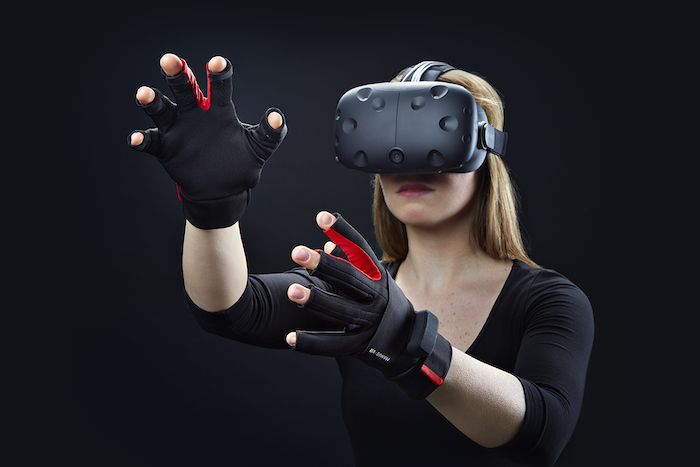The Definition
Virtual reality (VR) is a powerful technology that promises to change our lives unlike any other. By artificially stimulating our senses, our bodies become tricked into accepting another version of reality. VR is like a waking dream that could take place in a magical cartoon-like world, or could transport us to another part of the Earth or universe.
This VR technology is evolving rapidly, making it precarious to define VR in terms of specific devices that may fall out of favor in a year or two.
There are four key components that appear in VR:
- Targeted behavior: The organism is having an “experience” that was designed by the creator. Examples include flying, walking, exploring, watching a movie, and communicating with other organisms.
- Organism: This could be you, someone else, or even another life form such as a cockroach, fish, or monkey.
- Artificial sensory stimulation: Through the power of engineering, one or more senses of the organism become hijacked, and their ordinary inputs are replaced by artificial stimulation.
- Awareness: While having the experience, the organism seems unaware of the interference, thereby being “fooled” into feeling present in a virtual world. This unawareness leads to a sense of presence in an altered or another world. It is accepted as being natural.
Modern VR Experiences
The modern era of VR was brought about by advances in display, sensing, and computing technology from the smartphone industry. From Palmer Luckey’s 2012 Oculus Rift design to simply building a case for smart phones, the world has quickly changed as VR headsets are mass produced and placed into the hands of a wide variety of people. This is a quick overview of what people are doing with VR today:
- Video games
- Immersive cinema
- Telepresence
- Virtual societies
- Empathy
- Education
- Virtual prototyping
- Health care
- Augmented and mixed reality
- New human experiences
The Entire VR System – Bird’s Eye View
The first step to understanding how VR works is to consider what constitutes the entire VR system. It is tempting to think of it as being merely the hardware and software components, such as computers, headsets, and controllers. This would be woefully incomplete. It is equally important to account for the organism, which we refer to a human user.
The hardware produces stimuli that override the senses of the user. The VR hardware accomplishes this by using its own sensors, thereby tracking motions of the user. Head tracking is the most important, but tracking also may include button presses, controller movements, eye movements, or the movements of any other body parts.
The software programs the VR system by providing high-level descriptions and having the software determine automatically all of the low-level details. There would be a VR engine, which serves a purpose similar to the game engines available today for creating video games.
The human user were not designed for VR. By applying artificial stimulation to the senses, we are disrupting the operation of biological mechanisms that have taken hundreds of millions of years to evolve in a natural environment. We are also providing input to the brain that is not exactly consistent with all of our other life experiences. In some instances, our bodies may adapt to the new stimuli. This could cause us to become unaware of flaws in the VR system. In other cases, we might develop heightened awareness or the ability to interpret 3D scenes that were once difficult or ambiguous. Unfortunately, there are also many cases where our bodies react by increased fatigue or headaches, partly because the brain is working harder than usual to interpret the stimuli. Finally, the worst case is the onset of VR sickness, which typically involves symptoms of dizziness and nausea.
Current Status
The software and hardware technologies for VR are rapidly evolving. Since VR disrupts the ordinary perceptual processes of its users, the proposed VR systems and experiences need to be evaluated on users to understand whether they are yielding the desired effect while also avoiding unwanted side effects. This amounts to applying the scientific method to make observations, formulate hypotheses, and design experiments that determine their validity. When human subjects are involved, this becomes extremely challenging.
Reference: Virtual Reality by Steven M. LaValle, University of Illinois, http://vr.cs.uiuc.edu/

